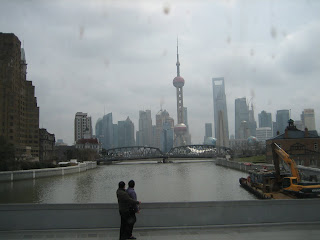







Nagasaki is formed by a cleft in the mountains, creating a long, thin bay that serves as an excellent harbor. The main portion of the city sits on the eastern slope of the bay. At the end of the 16th century, Nagasaki was the site where Catholicism from Portugal first set foot on the Japanese nation. Later Spanish attempts to proselytize Christianity were checked as the protagonists, Franciscans, were executed by the Japanese. But Portuguese and later Dutch traders were permitted to continue trading activities, provided they remained confined to fan-shaped island, built in 1634 for them, known as Dejima. This zone has been maintained until the present as an historical site. A church (see picture) and residential dwellings remain. When the Japanese launched their Great Leap Forward in the last quarter of the 19th century, British businessmen like Thomas Glover(or Mr. Walker, or Mr. Ringer) made fortunes bringing Western technologies to the Japanese while expediting tea and textiles and ceramics to the West. Glover helped to establish the industrial giant, Mitsubishi, but he also brought beer to Japan when he established the Kirin company. These prominent businessmen were not required to live in the Dejima settlement and they lived in mansions(picture) with gardens(two pix) overlooking the harbor. They attended churches built nearby on the mainland. Mitsubishi still has huge dock space throughout the harbor. You can still see the neo-classical HSBC building(picture) fronting the harbor. The area designated as ground zero(picture) is about 2 miles from the HSBC building, moving parallel to the axis of the bay, away from the bay’s outlet. See the statue honoring Puccini for his “Madame Butterfly”.








































